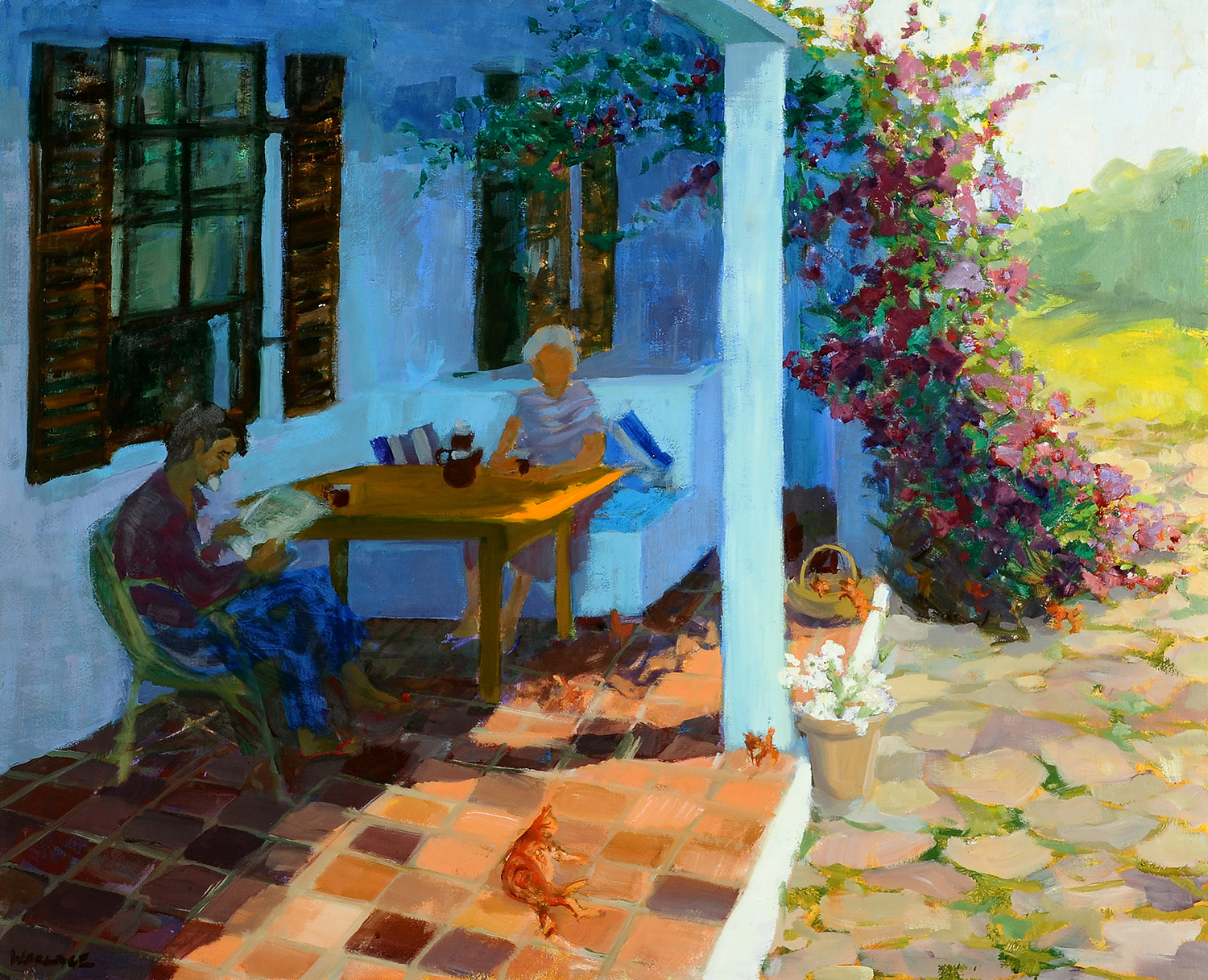MARJORIE WALLACE (1925 – 2005)
BIOGRAPHY
Scottish-born artist Marjorie Wallace trained at the Edinburgh College of Art from 1942 to 1947. She was then awarded a travel grant to explore Europe, after which she moved to Paris. It was there that she met her future husband, Jan Rabie, an Afrikaans writer who would later join the dissident literary movement the ‘Sestigers’.
In the mid-1950s, the couple relocated to South Africa, settling in Onrus, near Hermanus. They regularly opened their home to fellow Sestigers,, like Uys Krige, Ingrid Jonker, Jack Cope and Breyten Breytenbach, among others, who often found themselves included in Wallace’s artworks.
She painted many portraits – of the Sestigers, herself, and other sitters – and captured intimate domestic scenes from her life, such as lunch with friends or reading a book surrounded by her cats.
Wallace and her husband lived in Greece for three years in the late 1960s, and this, too, was documented in her paintings. The artist was also attuned to the struggles of those marginalised and dispossessed due to Apartheid, a theme frequently explored in her art. She also mentored Black and Coloured artists, including the influential Gladys Mgudlandlu.
Wallace exhibited widely throughout her career, and her works are in numerous private collections and many South African institutions, including the Iziko South African National Gallery, the Pretoria Art Museum, the University of Stellenbosch and the SABC Art Collection.
In 2005, she was posthumously awarded the Order of Ikhamanga in Bronze for her outstanding contribution to the visual arts.
SOURCE
‘Marjorie Wallace,’ Strauss&co, https://www.straussart.co.za/artists/marjorie-wallace


